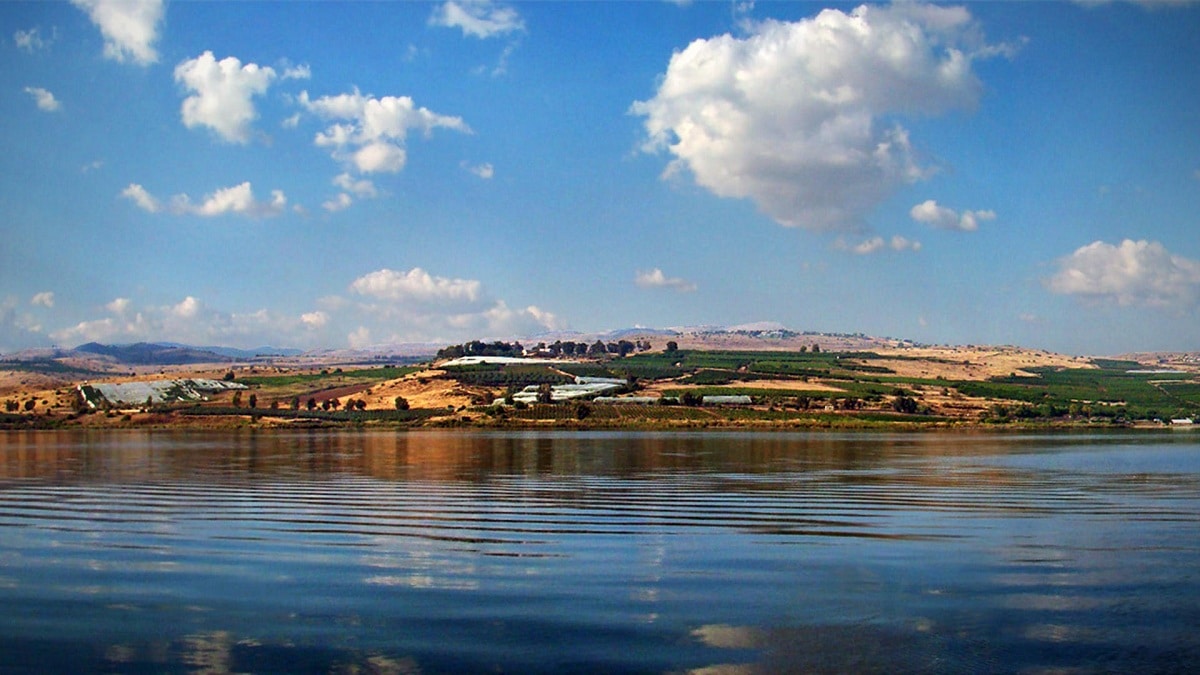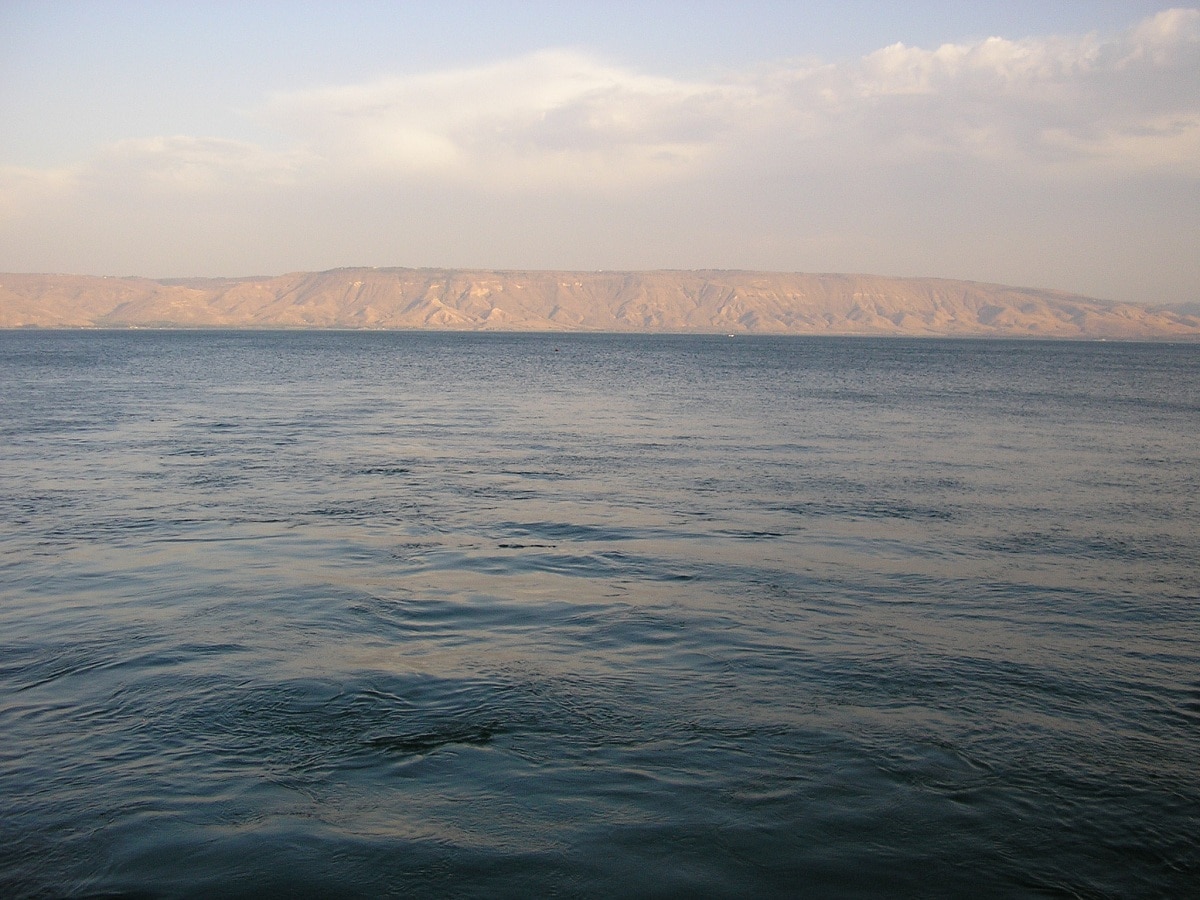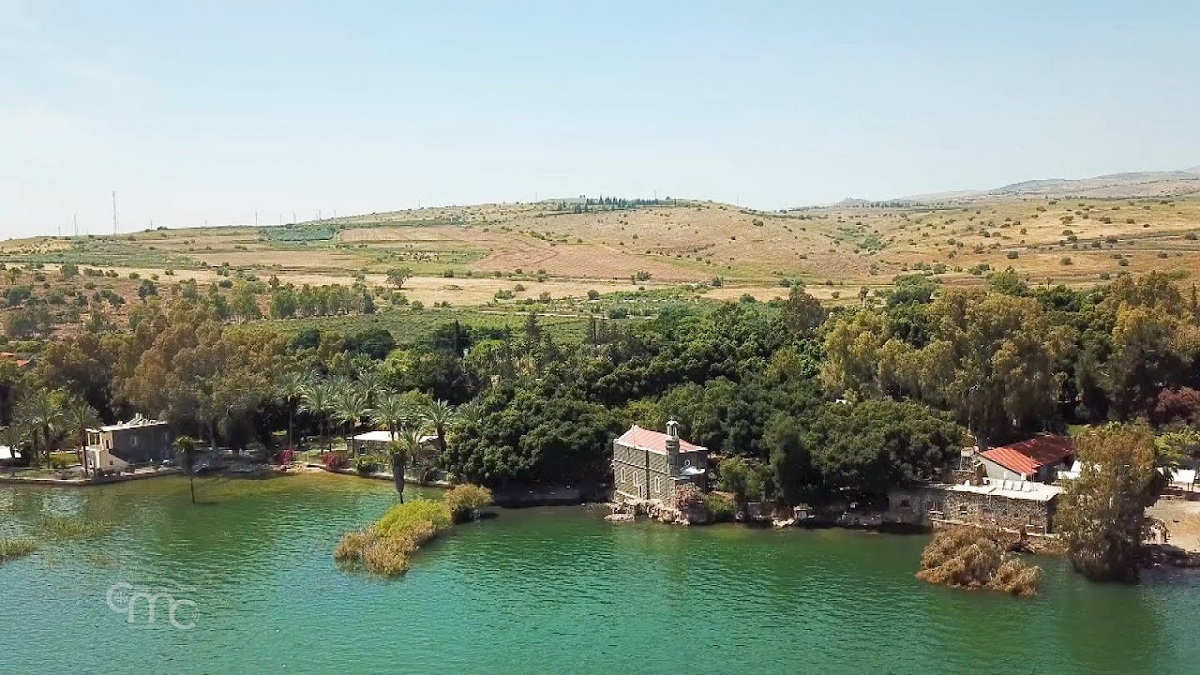
El sea of galilee It is known in many parts of the world as a sea, but in other regions it is known as a lake. And it is a concept more in line with the characteristics as we are going to see in this article. It is known in the Near East as Lake Tiberiades or Lake Generaset. It is a freshwater lake that is located at a height of 209 meters below sea level and has special characteristics.
Therefore, we are going to dedicate this article to tell you everything you need to know about the characteristics, formation and origin of the Sea of Galilee.
Key features

Esa freshwater lake 209 meters below sea level, located in northeastern Israel, north of the Jordan Valley and on the coast of the city of Tiberias. Its basin includes areas of Israel, Syria and Lebanon. Christians consider it a scene from various passages in the Bible, including Jesus walking on water.
The Sea of Galilee is the only natural freshwater lake in Israel. The area is about 164-166 square kilometers, the length is 20-21 kilometers, the widest is 12 to 13 kilometers and the volume is 4 square kilometers. Its deepest point is located in the northeast, 44-48 meters, with an average depth of 25,6-26 meters. It is supplied by underground springs and mainly by the Jordan River. The river passes through the lake and continues south for approximately 39 kilometers. Other small bodies of water, such as Golan streams and boulevards, discharge their water from the hills of Galilee.
The sea area is usually hot in summer and temperate in winter, with an average temperature of 14ºC. Some important historical and religious sites are preserved in coastal areas, such as Capernaum in the Bible.
Formation of the Sea of Galilee
The Sea of Galilee was formed by the tectonic process. The valley where it is located is the product of the separation of the Arab and African plates and the expansion of the seabed. The depression formed at the end of the Pliocene, and later lake sediments and a small amount of water occupied part of its area. Therefore, the Sea of Galilee and the Dead Sea are extensions of the Red Sea Rift Valley.
An interesting fact is that the Earth experienced a particularly wet period during the Quaternary, and then the Dead Sea, currently south of the Sea of Galilee, expanded and spread until it reached it, but the water began to recede some time 20.000 years.
Biodiversity

A pleasant climate and sufficient water create a fertile soil, which favors the growth of various plants. The cultivation of dates, bananas, citrus and vegetables has been thriving for centuries, and reeds in coastal areas are not uncommon. The waters are composed of zooplankton and various aquatic and semi-terrestrial crustaceans (as potamon potamios), mollusks (like unio terminalis y Falsipygula Barroisi), microalgae and fish (such as tristramella simonis, tristramella sacra, Acanthobrama terraesanctae, Damsel family, Silurus). family and catfish), tentacles and a species of tilapia (Tilapiini), known as San Pedro. Some fish are closely related to other fish that live in African lakes.
Until the middle of the XNUMXth century, the European otter (Lutra lutra) was a mammal that visited the waters of Galilee.
Threats from the Sea of Galilee

Fishing has been a basic economic activity on the Sea of Galilee since ancient times. However, considering that an ancient city related to Christian history was built around it, tourism has developed. Today, it is a popular area where you can spend your holidays on one of the beaches. Of course, human activities have an impact on the health of the ecosystem.
In dry years, the water level drops very low, which worries ecologists, because the ocean provides drinking water to the Israeli population and, as the population grows, its demand increases. People are concerned that the water will turn salty because there are springs of salt water underneath. On the other hand, the species Tristramella sacral has not been seen since the 1990s, so it is actually considered extinct.
Historical and cultural value
The Christian gospels say that Jesus did part of his ministry and certain miracles on the shore of a shallow lake. Jewish settlers established the first nearby kibbutz. In certain Islamic prophecies it appears that some underground springs flow into the lake, but most of the water comes from the Jordan River, which flows from Lebanon in the north to Israel and the Jordan River in the south.
The Sea of Galilee (sometimes called Lake Tiberias or Lake Kinneret) lies within the Jordan Rift Valley, a narrow depression that began to form when the Arabian Plate separated from Africa tens of millions of years ago. Many marshy floodplains around the lake and in the south They have been turned into farmland, showing a bright green color.
The Sea of Galilee has long been a popular destination for pilgrims. However, in recent decades, the condition of the lake has become increasingly fragile. In the past two decades, the water level has dropped dramatically, reaching almost the lowest level in history in 2018. Less water makes the lake saltier, making it less viable as a source of drinking water. These changes also threaten fish populations and encourage problem algae blooms.
Understanding falling water levels and finding ways to keep them stable is the subject of much research in the area. The reasons for decreases include lack of rainfall, increased water use in the upper reaches of Lebanon, higher temperatures (which will increase evaporation) and expansion of farmland and irrigated areas around the lake.
I hope that with this information you can learn more about the Sea of Galilee and its characteristics.